
by Bettina Shultz-Jobe, LPC, NBCC | Apr 20, 2023 | Case Studies, Personal Growth, Testimonials & Reflections
One of our dedicated Natural Lifemanship practitioners, Sarah Willeman Doran, recently authored a chapter in the new book, Integrating Horses into Healing that details her transformational healing journey with horses and specifically, her transformational experience with Natural Lifemanship.
As a Dually Advanced Certified NL Practitioner and Equine Professional (Advanced NLC-P,EP), Sarah embodies our mission at Natural Lifemanship and we’re excited to share a brief recap of what she shared about NL. To read the full chapter and other life changing stories of healing and transformation, get the book here: Integrating Horses into Healing.
A Fallen Star
Sarah’s relationship with horses begins in the competitive world of showjumping. At a young age, she was competing at the Grand Prix level and was seen as a rising star in the sport. She knew how to get the most out of her horses and saw great success early on. There was no telling how far she could go.
But behind the scenes, Sarah had faced abuse from one of her coaches. She’d suppressed her trauma to continue to perform in the sport she loved, and didn’t realize until far later how damaging this was.
Sarah’s meteoric rise in Grand Prix jumping would come to an abrupt end following traumatic riding injuries. She would eventually recover to win an intercollegiate individual national championship riding for Stanford University, but would never be able to return to a Grand Prix jumping level, and stepped out of competitive horse jumping.
But her journey with horses would eventually take a new path. .
A New Beginning
Following early retirement from competitive riding, Sarah shifted her focus to developing young horses. At the same time, she was also walking the path of personal growth and deep healing.
When Sarah came across the Fundamentals of NL and the Fundamentals Practicum, her relationship with trauma was changed forever. She found a new understanding of how trauma affects the nervous system, opening the way to greater self-compassion and healing.
“The NL model gave me a chance to work through nervous-system activation ‘in the field,’ which can create a more embodied and deeper experience than an office setting provides,” Sarah writes.
Finding early success with the Fundamentals of NL, Sarah went on to do a series of therapy intensives with her Natural Lifemanship therapist, each lasting three to four days.
“We processed a series of traumatic memories, and I truly felt my sense of them shift. It’s not that I’ve forgotten any of what happened, but now I can think of those things without feeling a jolt through my body,” Sarah explains.
Sarah’s third intensive session was her breakthrough moment, which she described as “coming out of a fog.” Finally able to process her trauma and have a deeper connection with her inner being, she gained the strength and wisdom to make positive changes in her life.
The Natural Lifemanship Institute offers Transformative Training
As Sarah continued to take NL courses for her own growth and her work with clients, she explained, “For me, at the trainings, some of my most powerful growth experiences were not even about the work with the horses. Rather, certain interpersonal moments were what the field of psychology calls ‘corrective emotional experiences.’ These were moments when I felt truly seen and cared for, when trainers recognized my needs and practiced one of the core NL principles: making sure not to take away the other’s sense of choice.” The following story is about one of these moments at an Intensive Practicum.
Sarah describes working with the paint horse she’d been partnered with: “It felt satisfying, as we practiced various ways of moving together in the pen and went on to haltering with connection. I later learned the owner said he was head shy, but at the time, our connection had evolved enough that he would move his nose toward the halter and stay relaxed as I brought it over his ears.” It was in one of these moments of quiet connection that a sudden burst of wind and rain swept through the arena. In a split second the horse lost awareness of Sarah, and she narrowly dodged him as he swung his head and took off.
When Sarah returned to the horse, he was agitated, running from one side of the pen to the other, unable to calm down. When she asked for his attention, he would buck and kick at her, at close range.
“I was still focused enough on performing well and pleasing others that I persisted in the pen to a point of complete exhaustion, trying in vain to raise my energy and bring the horse’s attention back to me, to help him connect and calm down,” Sarah said. “By the time I told one of the trainers that I was too exhausted to make any progress, I was in a state of nervous-system freeze that I hadn’t experienced in a long time. It felt familiar. . . I was afraid to tell anyone the extent of what I was feeling, and as usual, I looked basically fine from the outside. I had learned, through many years, how to keep going through these things and not reveal what was happening inside.”
Sarah was worried about going back to training the next day. With her nervous system in overwhelm, she didn’t feel she’d be able to work with the horse safely if he was still dysregulated and aggressive.
“When I arrived, I asked one of the trainers if we could speak privately. When westepped aside from the group, I couldn’t stop the tears, and I felt ashamed. I told her what I was going through, and also that I was worried about letting the trainers down. What happened next felt like a miracle to me: she listened with total kindness and without judgment; she expressed the trainers’ full confidence in my abilities with the horses; and she said I did not have to work with the horse if it didn’t feel safe.”
Sarah tried to work with the horse again, but he was still in an agitated state, and Sarah was still triggered. She was used to being the tough horsewoman from her competitive days and tried to persist at first, but was quickly faced with a fork in the road. Should she continue to hang on to this persistence that made her successful in the competitive world, or was it time to let go and do what was best for her well-being?
Sarah, with the help of her NL trainer, decided to let go.
“This was an empowering turning point. At the time, in my evolution as a person, what I needed most was to choose to put my well-being first. Not only to choose that but to be supported in that choice. To see and feel that my safety mattered, that taking care of myself was not a cause for rejection or abuse of any kind, but rather led to an experience of safety,” Sarah said. “This is what the NL trainer provided that day. She sat with me beside the pen, supporting me in my decision. . . this was a transformative experience of expressing a boundary around my safety and well-being and having it honored.”
Sarah learned more than just how to let go that day. As someone who’d experienced multiple forms of trauma in her youth, it had been difficult for her to express and uphold boundaries. She had been in relationships where boundaries were violated, and hadn’t known how to break the cycle.
At that moment, she was able to make a new choice.
“As we heal, the choices in relationships become much clearer. If we express our boundaries clearly and repeatedly and someone still can’t honor them, the relationship isn’t healthy,” Sarah explains. “At that point, we can either attempt stronger ways to make our request, or we can choose to end the relationship.” That day, Sarah chose to end the relationship knowing that it wasn’t healthy to push herself to work with this horse.
She called this moment a fundamental shift and a vital one for her own healing journey.
The ripple effect of healing
“Learning and practicing Natural Lifemanship changes the way we live. When we improve our relationships, the healing effect ripples outward through those around us. The more we heal ourselves, the more powerfully we can help clients,” she said.
Like many healing journeys, Sarah’s has been long and painful. However, it has also been deeply rewarding. With the transformation she experienced through her Natural Lifemanship training and therapy, Sarah has seen long-term tangible benefits in her life.
With a healthier and renewed nervous system, her baseline state has transformed from stress into wellness. She no longer lives with chronic pain, she feels at home in her own body, and she’s able to build the kind of healthy, connected relationships that bring the greatest sense of meaning in her life.
Sarah is now a certified life coach and a mindfulness meditation teacher. She is building her own Natural Lifemanship practice in Colorado, with plans to open a retreat center in the mountains.
Sarah is also an author, and you are sure to enjoy her writing. Here are some articles that focus on NL specifically:
Natural Lifemanship at the Wild Horse Sanctuary, Part 1
Natural Lifemanship at the Wild Horse Sanctuary, Part 2
The Healing Power of Connection
Building Connected Relationships
Begin Your Own Healing Journey Today
We couldn’t be more grateful to Sarah for sharing her journey of transformation with Natural Lifemanship. The beginning of Sarah’s journey is like so many for our NL community – it all begins with the Fundamentals of Natural Lifemanship.
If you’re ready to learn the principles of Natural Lifemanship, join us for this life-changing training.
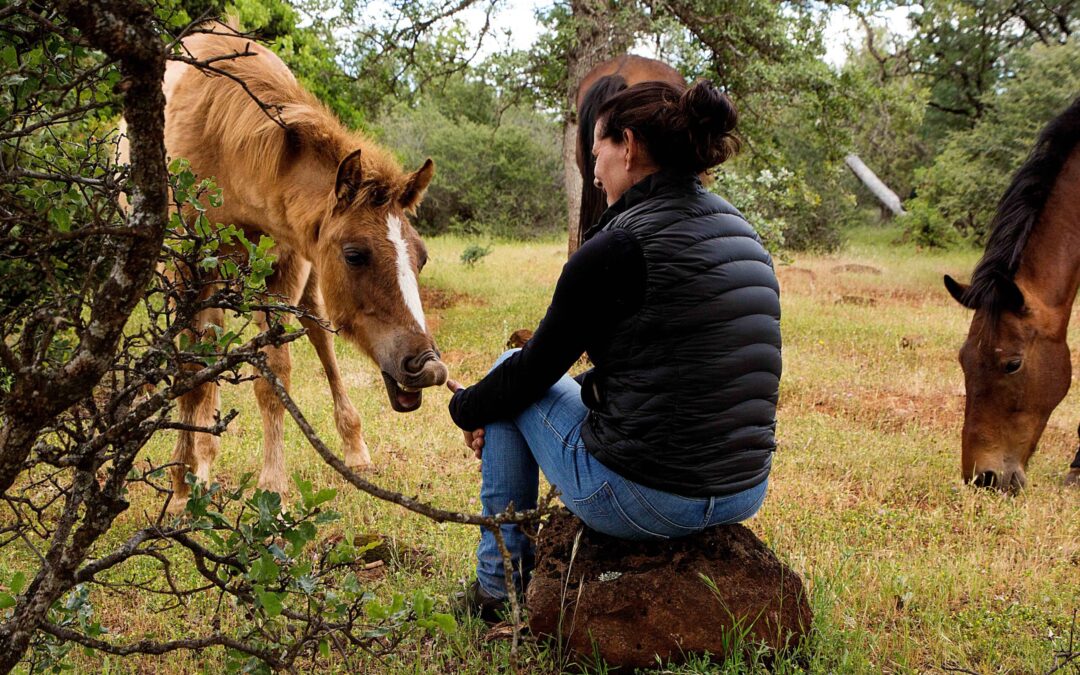
by Laura McFarland | Apr 10, 2023 | Applied Principles, Basics of Natural Lifemanship, Case Studies, Personal Growth, The Latest in Equine Assisted Therapy and Learning
We are beyond thrilled to share an amazing new resource for the field edited by Cheryl Meola. We had the honor of contributing severals chapters to this book. When she approached us about contributing chapters, Cheryl said she wanted this book to be a resource for people newly entering the field of equine-assisted services. We were asked to write in a “newbie”-friendly way. That said, we believe this book is equally valuable for seasoned professionals and for those new to the field.
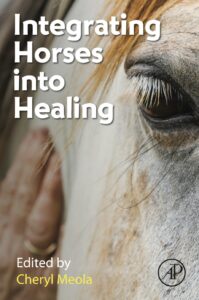
Here is a list of the book’s chapters with the titles we contributed in blue:
-
- Natural therapeutic aspects of horses by Cheryl Meola and Malaika King Albrecht
- The evolution of equine-assisted services (EAS): horses are good for people by Lorrie Renker, Octavia Brown and Pebbles Turbeville
- Horse Speak and Partnership by Sharon Wilsie and Laura Wilsie
- Relational Equine-Partnered Counseling (REPC) by Hallie Sheade
- An in-depth approach to relational work with equines: Natural Lifemanship by Bettina Shultz-Jobe and Kathleen Choe
- Breathing into relationships: the HERD Institute approach to equine-facilitated psychotherapy by Veronica Lac
- Side-to-side astride: the benefits and challenges of equine mounted work in trauma processing by Susanne Haseman
- Blended therapy modalities in equine-assisted psychotherapy: integrating equine-engaged internal family systems (EE-IFS) and equine-connected eye movement desensitization and reprocessing (EC-EMDR) by Jenn Pagone and Kathleen Choe
- Medical therapy (OT, PT, SLP) enhanced with hippotherapy by Joann Benjamin, Ruth Dismuke-Blakely and Karen Gardner
- The Equus Effect: a road to regulation through equine-assisted learning by Jane Strong, David Sonatore and Elizabeth E. Lloyd-Richardson
- Serving those who served…and still serve by Tara Mahoney
- Beyond mind and body: spiritual connections in equine-assisted services by Kathleen Choe and Laura McFarland
- Be the Horse’s Advocate by C. Mike Tomlinson
- Enhancing the horses voice: incorporating Horse Speak into psychotherapy by Susanne Haseman, Sharon Wilsie and Laura Wilsie
- Exploring socio-emotional and cognitive development in horses by Tim Jobe, Tanner Jobe and Rebecca J. Hubbard
- Not just horsing around: an equine professional’s guiding principles by Malaika King Albrecht
- The role of the equine professional in equine-assisted services by Tim Jobe, Tanner Jobe and Reccia Jobe
- Heart centered horsemanship: the horse trainer’s perspective in EAS by Stacey Carter
- A holistic perspective: My transformative journey through Natural Lifemanship by Sarah Willeman Doran
- Are we there yet? The ongoing journey of healing for the healers by Kathleen Choe
- Interventions and strategies toward mental health and wellbeing for professionals by Aviva Vincent and Joanna Robson
- Starting or restarting an equine-assisted services organization: Don’t put the cart before the horse by Nancy Paschall
- The key to a successful non-profit board by John Matthew Kundtz
- How do you know it works: Evaluating equine-assisted service programs by Maureen MacNamara
- Bridging research and practice in equine-assisted services by Kimberly I. Tumlin
- Conclusions and future directions
Each chapter in this book is contributed by an expert in the field and provides an overview of the topic plus concrete examples and helpful resources. We are so proud to have been a part of this effort and cannot recommend this book strongly enough!
Psst…when you order the book through the links in this article, we earn a small affiliate commission. This transparency is important to us, but since we contributed to the book, you know we recommend it whole-heartedly!
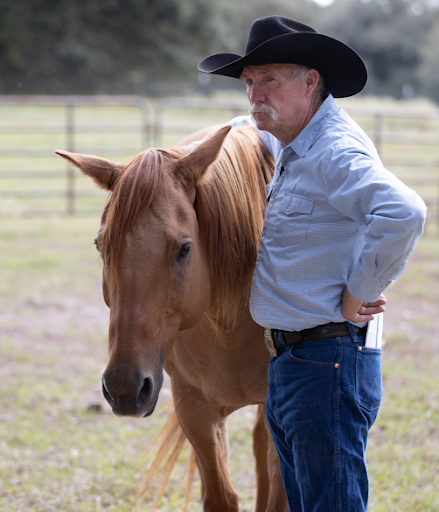
by Bettina Shultz-Jobe, LPC, NBCC | Mar 6, 2023 | Applied Principles, Basics of Natural Lifemanship, Horsemanship, Personal Growth, Testimonials & Reflections
This week, we opened registration for the NL Intensive. One of the big questions we always get from our community is how the NL Intensive is different from the Fundamentals of NL.
The simple answer: Fundamentals teaches you a new way of thinking about your relationship with horses, people and yourself. The Intensive teaches you a new way of being.
The Intensive is the point in your learning that represents a complete and total paradigm shift. It’s when the old ways of doing, being and showing up are set aside and the new ways of being take root.
So, how did we come about this way of teaching and embodying the principles of Natural Lifemanship? It all began with my partner in life and in this business, Tim Jobe, in 1986 at West Texas Boys Ranch. Here is a snippet of Tim’s story.
In 1986, Tim was running a 40,000 cattle ranch when he decided to take a new job. There was a 5,000 acre farming ranch in West Texas that needed an experienced horse trainer to work with not only the horses, but also 75 displaced boys who lived and worked on the property.
“The horses were really well trained, but the boys couldn’t ride them at all,” Tim said. “Pretty soon, I realized it wasn’t the kids’ fault.”
Growing up, Tim experienced domination, control, and severe abuse in his family of origin. And like all of us, the nature of our earliest relationships extend to our way of thinking and being in our relationships with others, including those with horses.
“These boys didn’t know how to intimidate the horses the way I could,” Tim said. “But I decided that if I was going to be able to get those boys to ride, I had to find another way to interact with my horses – without power, domination and control. I had to help them learn to do the right thing because it was the right thing to do.”
Change your principles, change your techniques
Working at a boys’ ranch, Tim often went to staff meetings with child psychologists and other specialists. As he listened to the principles the psychologists used when working with the boys, he started to wonder why we don’t use these same human relationship principles when we work with horses.
“We have these patterns in our brain for what works when training horses,” Tim said. “We can consciously think about what would work better, but our bodies fall into old patterns so easily in practice. We can’t just destroy everything we knew before – we have to use all the techniques we know work, but with different underlying principles and a different body state.”
“Before starting on this journey, I would ask a horse to do something and just kept increasing the pressure until they did it,” Tim said. “But to do that, they had to quit thinking, quit feeling and just submit to everything I asked them to do.”
“Now, I understand that resistance is just a search for an answer, so when a horse resists, I keep my energy and my intention the same. I offer more connection.” Tim said. “I don’t want to remove my request because then I teach that the way to get your needs met is to resist. I have to maintain my request in a way that makes it safe for the horse to continue to search for answers, because if I increase my energy or the pressure they will submit, appease, or increase the resistance. This is one example of a small change that has made a big difference. . . and took a ton of personal work.”
Embodying the principles of Natural Lifemanship
This new way of being that Tim pioneered back in 1986 was the foundation for the principles Natural Lifemanship is known for today. Along the way, we have met people like you, who want to live in a world where connection and healthy relationships are seen and felt in everything we do.
To live in that world, we have to build it.
When our relationship with horses and people are built on trust, mutual respect, attunement and connection, the healing principles can transfer seamlessly to healthy human relationships with yourself and your clients.
On Thursday, March 9th, Tim Jobe will be in conversation with Kate Naylor about his discovery nearly 40 years ago, the transformation that took root for him during that season, and the personal journey he took to truly embody the principles of Natural Lifemanship – a journey he’s still on today. We hope you’ll join us for that conversation.
If you’re ready to join us on your own journey of personal transformation – and build the world we want to live in – join us for the NL Intensive.
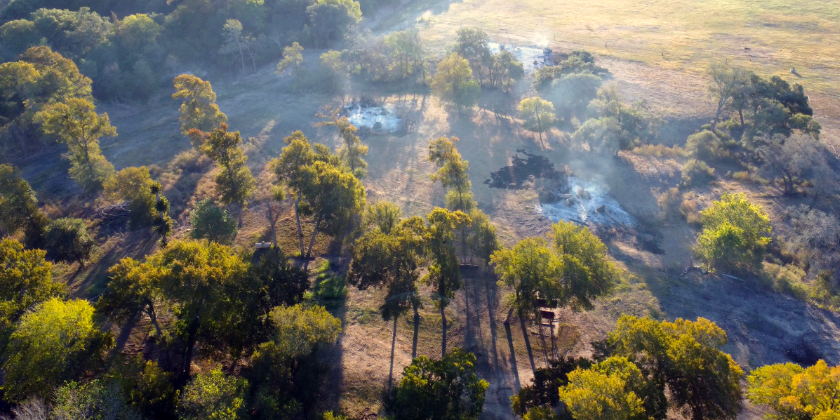
by Bettina Shultz-Jobe, LPC, NBCC | Jan 24, 2023 | Personal Growth
“Every act of creation is first an act of destruction.”
-Pablo Picasso
We often speak about the breaking down of something old, and the rebuilding of something new. A process of transformation. Of repair. Of renewal.
All of which are essential to healing and growth. All of which sound quite lovely, and maybe even trite. . . unless you’ve experienced the breaking down of something old. Literally or figuratively.
You see, a very important part of our growth journey, as an organization, is the longing for space. A deep and growing desire for a place to call ours. A place to invite others from around the world for healing, learning, connection, guidance, reflection, and ultimately renewal.
This place, which we’ve often constructed in our dreams, is finally being built. Yet in the process of actualizing the space that was gifted to us and that we, in turn, are gifting to others – we first faced destruction. Demolition of that which no longer served us, the horses, or the land.
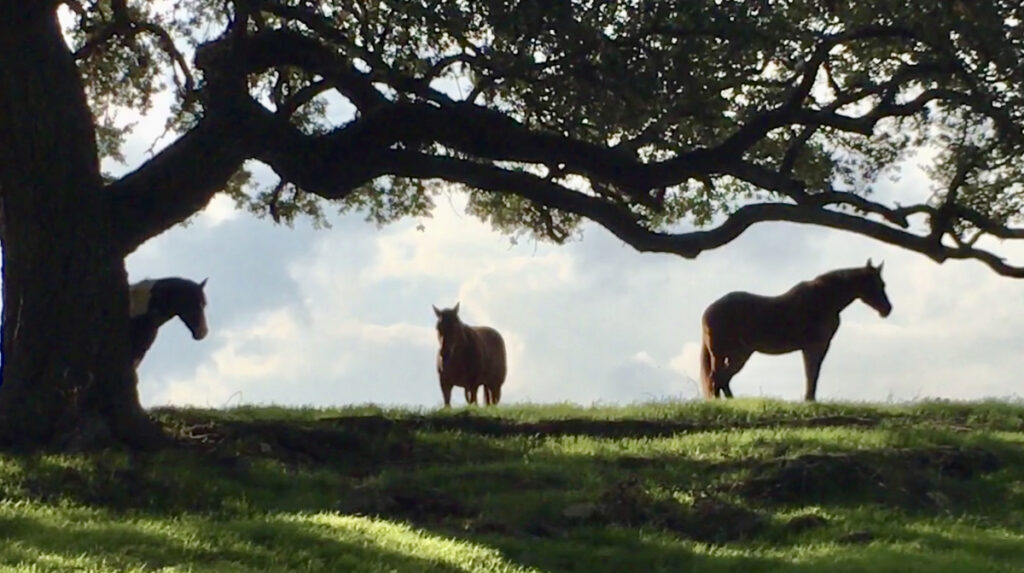
NL Headquarters, Back Forty
The Demolition
In the physical sense, we first engaged in the demolition of over 100 horse stalls that represented an old relationship with horses, one that departs from the relationship principles that we hold dear.
We tore down worn and tired buildings and fence to birth in their places more uplifting and inspiring spaces. While honoring wise and breathtaking trees, and the land that’s invited us here, we cleared dying brush and paved a road where hope could come, grow, and spread—departing back to its home.
The Destruction was Harder than I Expected
Call me naive, but I had this image of a huge wrecking ball knocking everything down, and WHAM! Just like that, the old is leveled. It wasn’t quite like that. It was much more slow and methodical and painful. Imagine squeaky machinery removing parts of buildings bit by bit.
There were moments of intensity, but taking down the old took much more time than I expected. And there was fallout – unintentional damage was done throughout this process. For example, water lines were busted and days were spent repairing this damage. And the clean-up, so much clean-up. . . This took even longer.
Once buildings were removed, the mark on the land still remained. The scar that shows what once was. Some parts of our land are now ready for healing and growth and the process of creating something new!
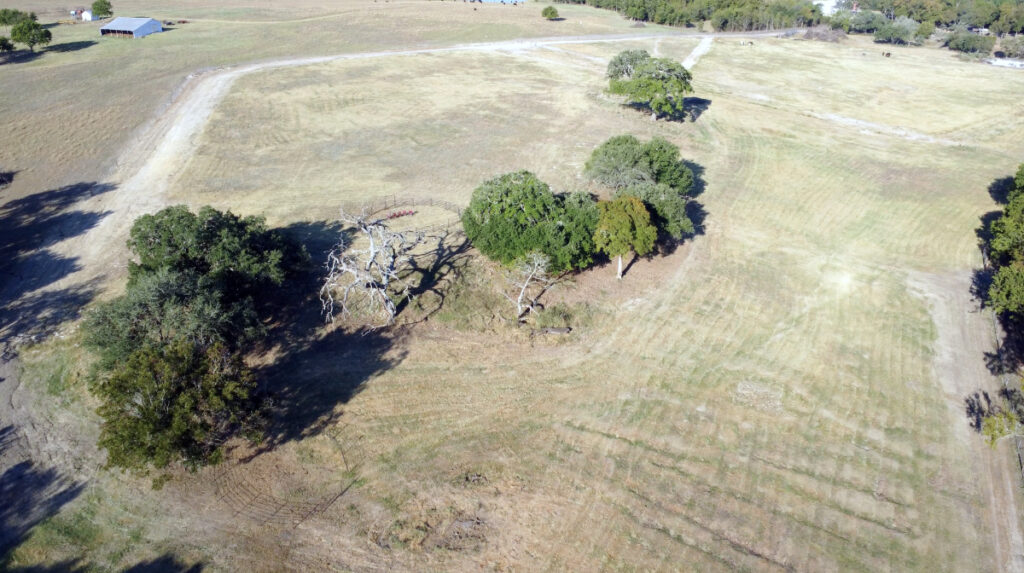
NL Headquarters, Back Forty
The Repair and the Creation
Honoring the belief that the land’s ability to offer and support healing is in direct proportion to how much the land itself is healed, we have enacted a plan that involves continual pruning, healing, growth, and creation.
We, as people and living beings, heal in the same way the land heals. Sometimes structures that no longer serve us must be identified, broken down, and removed. And it takes the time it takes. No quick fixes or wrecking balls.
My clients are the most amazing and brave people I know. I love it when they reach out to me because they’re ready to do the hard work of healing, and I often remind them that “hurry up and heal” isn’t really a thing. You can’t rush your healing (a song I recently learned from one of our Rhythmic Riding participants).
I have also recently experienced that there are consequences to rushing the destruction and the clean-up. Destruction that is necessary to make way for creation.
Through our collaboration with That’s the Dream Ranch the entire place is beginning to heal.
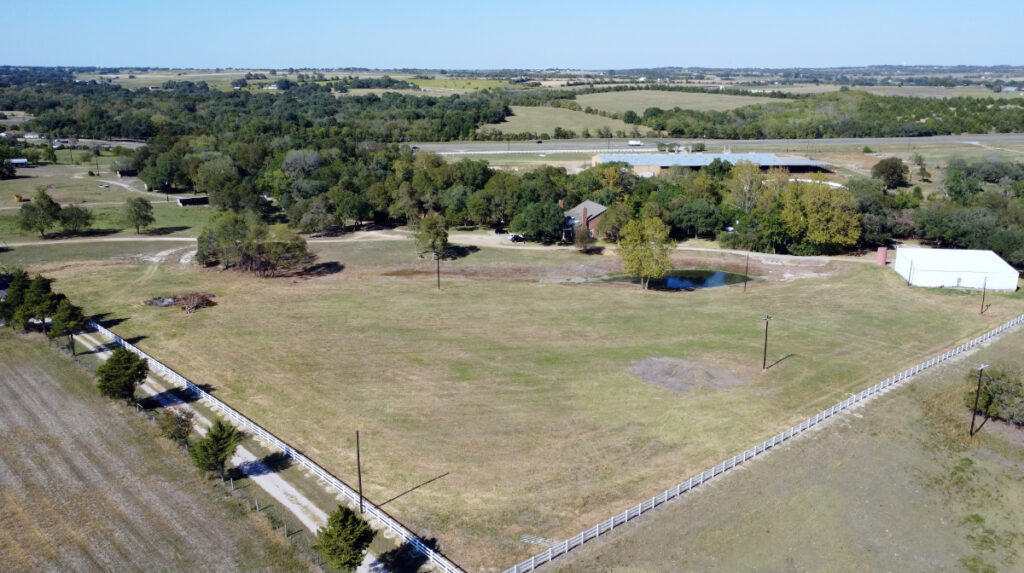
NL Headquarters, Hay Field
Land is resting and grass is growing. New fences are being built. A new well has been dug. Ponds are being developed to manage erosion. New septics, new windows, drywall, air conditioning units, and on and on.
We are currently in the process of refurbishing the inn, where our guests can rest—and just like caterpillars—prepare for their own metamorphosis. That is, their own destruction and rebuilding.
It is our humble hope that all who enter our gates will experience the safe breaking down of that which no longer serves them and the slow healing and deliberate creation that follows.
People searching for transformation—for themselves and for their clients.
People like you.
Communities like ours.
We look forward to both the demolition and the rebuilding that we will do together as a community.
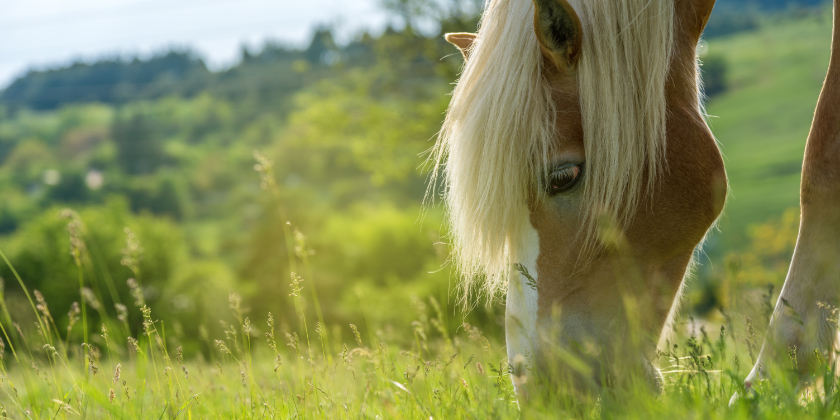
by Kate Naylor | Jan 9, 2023 | Applied Principles, Basics of Natural Lifemanship, Equine Assisted Trainings, Personal Growth
By Kate Naylor and Bettina Shultz-Jobe
A heartbeat. Waves rolling in and out on a sandy beach. The rising and setting of the sun.
The aroma of your favorite meal. A long walk to clear your head. That sense of joy that comes from swinging on a swing.
Your partner walking in the door at 5 o’clock every day and offering that same greeting they always do. The connection that follows a relational repair. The sound of horses munching on grass.
This is rhythm.
Our bodies and minds crave rhythm. It exists both figuratively and literally in our daily lives, and offers us repeated experiences of predictability in our environments, our relationships, and in our bodies.
Not surprising then, rhythm is one of the three necessary components of trauma informed care as outlined by Dr. Bruce Perry and many other experts in the field of trauma and attachment. Others like Bonnie Badenoch, Dan Siegel, Bonnie Bainbridge Cohen, Pat Ogden, and Bessel van der Kolk emphasize the importance of rhythm in our lives.
Without rhythm, we miss an integral part of the healing puzzle. In fact, we cannot offer Trauma Informed Care without it.
We also experience plenty of moments that are filled with a lack of rhythm, a lack of predictability – times of sensory, environmental, or relational chaos. These moments have an impact on us too.
The practice of creating rhythm in relationships
Recognizing literal and figurative rhythms allows us to use them to enhance our programs, our work with clients, and our own healing work.
Join us for the Fundamentals of Natural Lifemanship to:
- Better understand how sensory rhythm is always affecting us, even in the very beginnings of life
- Rhythmically connect with our bodies and the world around us to regulate the nervous system
- Experience how much the rhythm of our movements matter (especially around horses!)
- Learn the components of rhythmic environments
- Feel how to BE in rhythmic relationships with humans, horses, and other animals
… and how to creatively bring more intentional rhythm into your sessions for effective (and fun!) therapeutic work.
The benefits of rhythm
With more rhythm, you can expect a more regulated mind and body – setting you up for more client progress and less professional burnout.
Pssst…in the Fundamentals, you will also come to understand the other two necessary components of effective trauma informed care!
Improve professional competency, enhance your work, and engage clients in lasting change – with the Fundamentals of Natural Lifemanship.
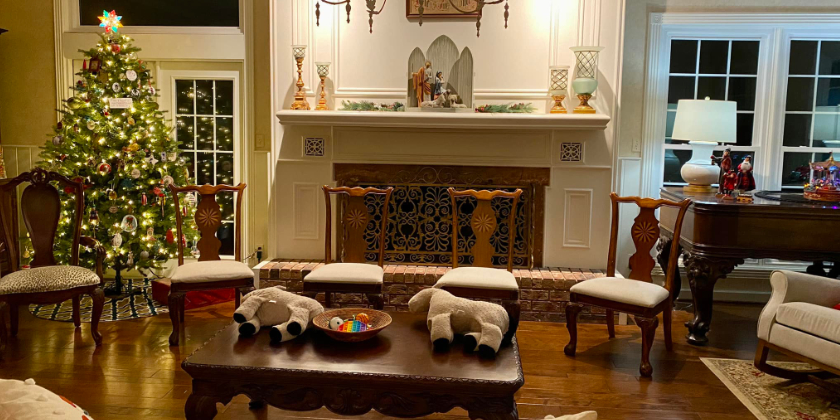
by Bettina Shultz-Jobe, LPC, NBCC | Dec 15, 2022 | Personal Growth
So, I’m in Walmart, slowly picking up my pace among thousands of frenetic shoppers. I am already walking with a rather brisk stride, but as I eye those next to me I find my feet moving faster and faster the closer I get to the Christmas decorations.
Then I turn. At the end of an aisle of red and green and glittery things I see a huge mound of tree skirts, probably 10 feet tall, and hundreds of people digging through them. I am on a quest to find a beautiful skirt to go around the bottom of my Christmas tree. Evidently, many others are pursuing the same thing.
It must have red and green alternating sections, made of soft and silky velvet, with scalloped edges made of eyelet lace. It must be heavy and luxurious, just like the one my mother made for our family when I was a little girl. I remember wearing it while we decorated the tree and sang to the Dolly Parton and Kenny Rogers Christmas album. I think that the year my mother made this beautiful tree skirt she also made us all matching dresses out of the same material.
This is the tree skirt I seek.
As I approach this pile of beautiful tree skirts, people are throwing unwanted skirts behind them. Several land on top of me, blinding me and weighing me down, and more panic sets in. What if I can’t find the one I want – the one I picture. I start ripping through the pile of tree skirts, my palms sweaty, my heart racing, and a lump in my throat – I am terrified. The pile is dwindling so quickly.
Then I see it – the exact tree skirt from my childhood. EXACT. I dive for it, my entire body hitting the floor. The world slows and just as I am about to reach it, someone swoops in and snatches it right out from in front of me. I watch as it disappears into a sea of Christmas shoppers, and I scream out as I weep, pull up my aching body, pick up one of the picked over red and green skirts, and begin to walk back down the aisle from which I came.
The crowd brushing up against me, my body heavy, my broken heart sobbing in my ears. I begin to walk and find myself in an aisle that is dark, quiet, sad, and lonely – I’m not sure how I ended up there, but it feels right.
As I trudge down this aisle, my eyes spot something turquoise, gold, and silver. I blink the tears away so I can see more clearly – as I inch closer, I see the most beautiful tree skirt I have ever seen. Completely different than what I had come for.
And completely perfect. Absolutely, completely perfect. I hug it to my chest and know that this is it.
It was all a dream
I had this dream during a time when Tim and I were trying to figure out how to handle the fact that this thing was happening between us. We tried really hard not to fall in love – it’s a long story I guess. We also tried really hard not to start this business – that’s a long story too.
Shortly after this dream, we officially started dating, and I became obsessed with finding the tree skirt in my dream. I drug Tim to every single store in Amarillo Texas and could not find anything even close. It was one year later that my younger sister, Jamie, and I found it at a trade show of sorts in Austin. A woman there took old upholstery fabric from used furniture and repurposed it.
My entire body filled with goose bumps when I saw it there. It was definitely out of the budget at that time, but I bought it anyway (my sister is often very good at convincing me to purchase things that will make me happy!)
Different and Perfect
It’s totally different than what I originally envisioned, and every year when I put it under the tree I do it with tears in my eyes because I love it so much.
As I place it under the tree I think about the long and lonely journey that led Tim to me. I think about our tree skirt’s journey. I think about our marriage. I think about our children. I think about this life we have built. I think about our business – a lot. I think about our very best of friends and the community we have found through our mission and our passion.
I think about the many people in our lives who have chosen a different tree skirt. We’re cycle breakers – in our families – with our horses – with our businesses. We do it scared. We often walk a lonely path, but we choose something different. . .really different.
And really beautiful.
This year, I put our perfect tree skirt under the tree in our new place in preparation for one of my favorite trainings, the Personal Immersion and it stayed under the tree throughout the season as we welcomed our trainers for the trainer’s retreat. It sits under our tree as a symbol of the resilience of people we would be welcoming into our home, and a symbol of our support of them as they do the hard work of healing and transforming. I thought about their grief and mine, and the things we let go of so we can grab hold of miracles.












Recent Comments